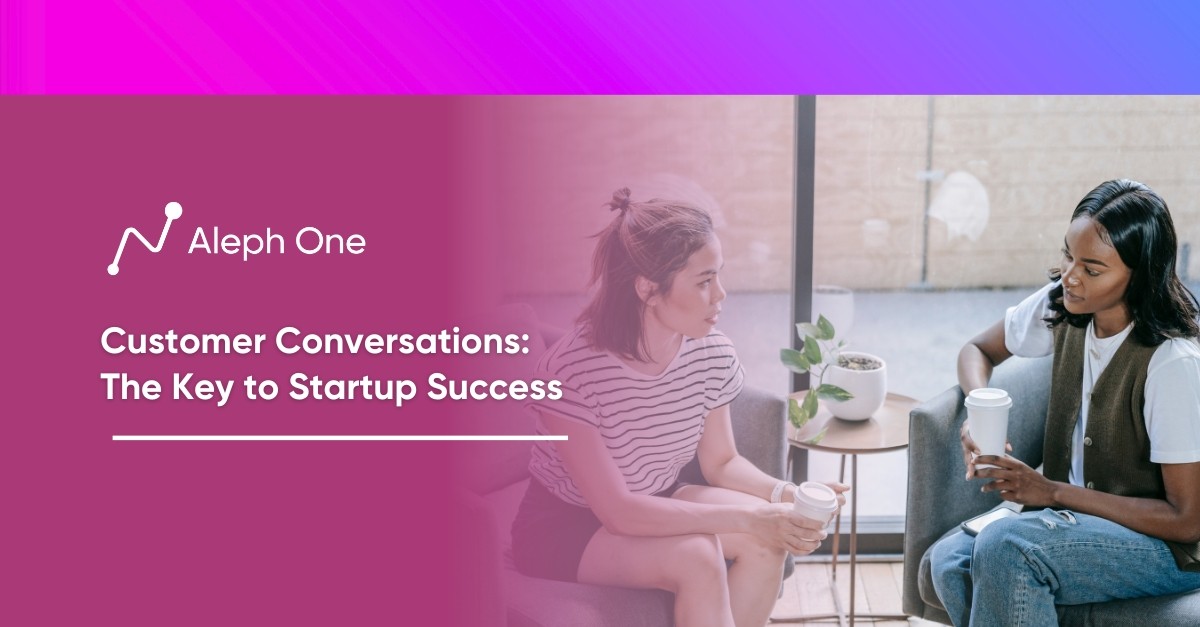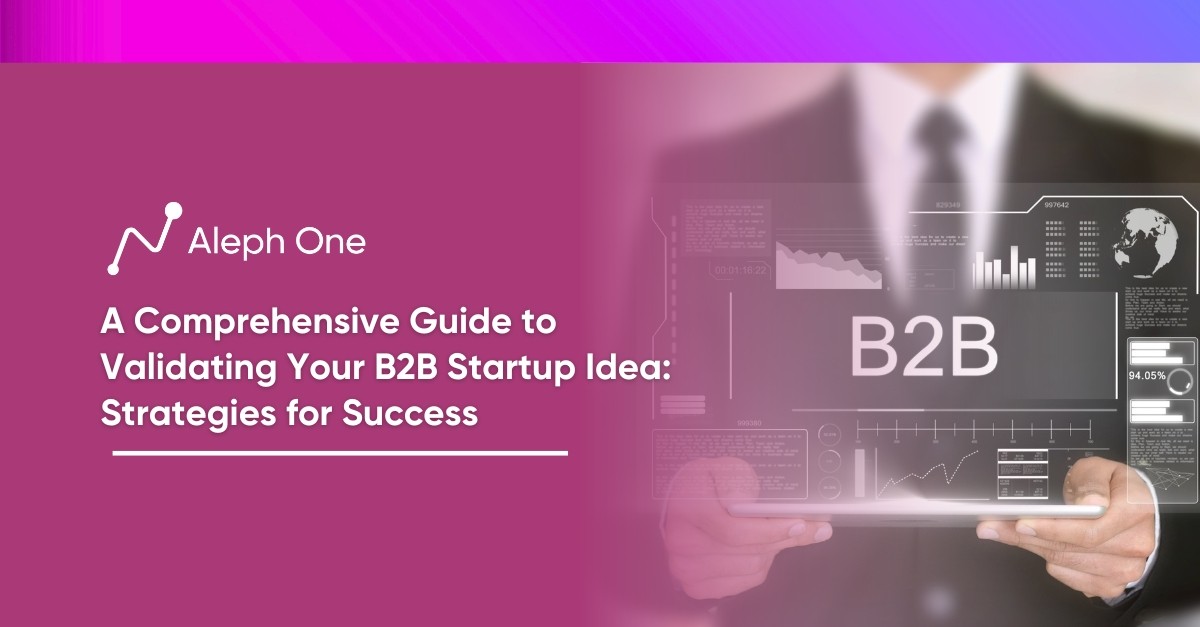Let’s work together to build something amazing. Share your project details and our team will reply to figure out the next steps to your success.

In startups, the key to success lies in acquiring customers effectively. But where do you begin? The first step is unraveling the mysteries of your ideal customer. In this comprehensive guide, we will take you on a journey to discover the strategies, metrics, and best practices that will empower you to unlock the true potential of customer acquisition. We’ll start by exploring the foundation of success: identifying your ideal customer. By conducting thorough customer research and building detailed customer personas, you can tailor your marketing and sales efforts to resonate with your target audience on a personal level. Prepare to dive deep into customer personas and witness how personalized campaigns can lead to a remarkable 20% increase in sales compared to generic approaches. Prepare to transform your startup’s customer acquisition game and pave the way for sustainable growth.

How to Identify Your Ideal Customer: The Foundation of Success
The first step to acquiring customers is understanding your ideal customer. Conducting customer research and building detailed customer personas is essential to target your marketing and sales efforts. According to recent studies, personalized marketing campaigns see up to a 20% increase in sales compared to generic mass marketing.
Conduct Surveys, Interviews, and Focus Groups
Conduct surveys, interviews, and focus groups to gather information on your customers’ demographics, behaviors, and pain points. Look for patterns across your loyal and highest-value customers. The more specific you can get, the better. Identify details like job titles, company sizes, locations, etc. Give each persona a memorable name and photo to bring them to life.
Tailor Marketing and Sales Messaging to Ideal Customers
With your customer personas, you can tailor your marketing and sales messaging to resonate with your ideal customers. Focus your content and social media on the topics and channels that matter most to them. Optimize your website and product to address their critical needs and pain points. Even personalize your email marketing and sales outreach using the names and attributes of your personas.
Personalized Messages Increase Leads and Sales
According to recent research from Demand Metric, 70% of B2B companies that utilized targeted content based on customer personas saw a positive impact on their lead generation. The more relevant and personalized your messaging is, the more likely you are to capture the attention of your ideal customers and turn them into new leads and sales.
Continually gather feedback from new and existing customers to update your customer personas over time. As your business grows and new customer segments emerge, you may need to develop additional personas to guide your marketing and sales strategies. With a data-driven understanding of who your customers are and what motivates them, you’ll be poised to boost your customer acquisition rates over the long run. The success of your entire customer acquisition program depends on first identifying and targeting your ideal customer.
Lead Generation: Where to Find Your Next Customer
To acquire new customers, you first need to generate leads. Several proven lead generation channels can drive interested prospects to your business.
Content Marketing
Content marketing is one of the most effective lead-generation strategies. By publishing valuable content like blog posts, ebooks, videos, and podcasts, you can attract organic traffic and capture leads through content offers like ebooks, webinars, and gated content. According to Demand Metric, 70% of B2B leads come from content marketing.
Social Media
Social media is another critical channel for lead generation. Build an active presence on platforms like LinkedIn, Twitter, and Facebook to engage your target audience and promote your content offers and services. According to HubSpot, social media generates more than 2x outbound marketing leads.
Email Marketing
Email marketing lets you stay in front of interested prospects and promote your latest content, offers, and services. You can build an email list and send regular newsletters and promotions by capturing email addresses through your website, content, and events. Campaign Monitor found that for every $1 spent on email marketing, the average return on investment is $38.
Partnerships
Partnerships are a great way to tap into new lead sources. Identify companies that serve your target customers and explore co-marketing or referral partnerships. You can cross-promote each other’s services, collaborate on content, or set up a formal referral program. ReferralCandy found that referred customers have a 25% higher lifetime value.
Pay-per-click Advertising
Pay-per-click advertising on platforms like Google Ads and Facebook Ads allows you to drive targeted traffic to your website and capture leads through offers and forms. While PPC does require an upfront investment, it can be an effective channel for quickly generating leads and measuring ROI. WordStream found that the average click-through rate for Google Ads is 3.17%.
Using a mix of the channels above, you can build a consistent lead generation engine to fuel your customer acquisition efforts. But generating more leads is only half the battle—you also need to convert those leads into paying customers.
Convert More Leads: How to Turn Interest Into Sales
Once you’ve generated leads, the next step is to convert them into paying customers. This is known as conversion rate optimization (CRO) and can significantly impact your customer acquisition success. Some companies have increased sales by up to 25% through CRO campaigns.
Simplify the Buying Process
The first strategy is to simplify your buying process. Remove any friction from the lead to the customer. Make it easy to sign up, purchase, or schedule a demo. The easiest way you make it, the more leads will convert.
Build Trust
Building trust is also key. Use social proof like testimonials, case studies, and reviews to show potential customers that others have succeeded with your product. Highlight any awards or media mentions you’ve received as well. Transparency and a risk-free trial period can also help build trust.
Offer Incentives
Offering incentives is an effective way to motivate leads to take action. Discounts, coupons, free resources or tools, and free trials are all excellent options. But be careful not to make your incentives seem desperate. Find the right balance to move leads forward in the buying process without damaging your brand authority.
Follow up Consistently
Following up persistently and consistently is one of the most important things you can do to optimize your conversion rates. According to research from Harvard Business School, 80% of sales require five follow-up calls after the initial contact. Send targeted emails, make phone calls, and use CRM software to schedule reminders to follow up with your leads. The more you stay in front of them, the more likely they will convert.
While optimizing your conversion rate does take work, the rewards can be huge. Even minor improvements to your buying process, trust factors, incentives, and follow-up strategy can significantly impact your customer acquisition numbers. Track key metrics like your conversion rate at each stage of the funnel to see what’s working and make data-driven optimizations to turn more of your hard-earned leads into long-term customers.
Customer Retention: Keep Your Customers Coming Back
Once you acquire a new customer, the work has only just begun. Keeping existing customers happy and engaged is essential for sustainable business growth. According to Bain & Company, increasing customer retention rates by just 5% can increase profits by 25-95%. Here are some of the most effective strategies for retaining and upselling your existing customers:
Loyalty and VIP Programs
Offering rewards and incentives for repeat customers is a proven way to build loyalty. Discounts, special offers, and exclusive perks for frequent buyers can motivate them to return. Many SaaS companies offer “grandfathered” pricing for long-term customers to reward loyalty.
Superior Customer Service
High-quality support and service show customers you value them. Responding quickly to questions and complaints and proactively checking in with customers to ensure satisfaction builds goodwill and trust. Zappos and Nordstrom are examples of companies known for “over-the-top” customer service that leads to high retention and word-of-mouth marketing.
Targeted Email Marketing
Email marketing is one of the best ways to engage and re-engage customers. Send regular newsletters with helpful content and special offers. Run win-back and re-engagement email campaigns for customers who have churned. Personalized, segmented emails based on past purchases and behavior are most effective. Research shows that retention rates can increase by up to 65% using targeted email marketing.
Upselling and Cross-selling
It’s much easier to sell more to an existing happy customer than to acquire a new one. Look for opportunities to upsell customers to higher-tier plans and services or cross-sell complementary products. Provide special bundled packages and discounts to incentivize customers to buy more from you. Amazon is the master of upselling and cross-selling to boost customer lifetime value.
A combination of loyalty programs, high-quality customer service, targeted email marketing, and upselling/cross-selling existing customers are proven strategies for improving retention and maximizing the value of your customer base. While customer acquisition is essential for growth, customer retention fuels long-term success.
The Customer Acquisition Funnel: How to Track Your Success
To optimize your customer acquisition efforts, you must set up a funnel that tracks key metrics and KPIs. The funnel typically has stages like awareness, interest, evaluation, purchase, and loyalty. At each stage, you define conversion rates and goals to work towards.
Customer Acquisition Cost (CAC) and Customer Lifetime Value (CLV)
Two of the most important metrics to track are customer acquisition cost (CAC) and customer lifetime value (CLV). CAC refers to the total cost of acquiring a new customer, including marketing and sales expenses. Aim for a CAC lower than your CLV, which is the total revenue a customer generates over their lifetime. According to ProfitWell, the average CAC for SaaS companies is $1.30 for every $1 CLV. Companies with a CAC: CLV ratio of 1:3 or better are well-positioned for growth.
Conversion Rate and Retention Rate
Beyond costs, track key conversion rates like leads to sales (conversion rate), newsletter signups to leads (lead conversion rate), and sales to repeat customers (retention rate). Software company Totango found that optimizing the customer acquisition funnel can increase customer acquisition by up to 32%. They doubled their free trial conversion rate, increased lead conversion by 75%, and boosted customer retention by 50% or more.
Provide Visual Representation of Your Sales Funnel
Visual representations of your funnel can provide powerful insights. A funnel chart shows the number of people at each stage, allowing you to spot bottlenecks and opportunities. A cohort analysis tracks the performance of groups of customers who entered your funnel simultaneously. You can see how different marketing campaigns, features, and touchpoints impact their progression through the funnel.
With a data-driven customer acquisition funnel, you have the insights to optimize your marketing, improve the customer experience, increase conversions, and scale your startup. Continually experiment with new strategies and campaigns, measure the results, and double down on what’s working. Companies that build a growth machine around their customer acquisition funnel will thrive.
Expert Opinions: What the Pros Have to Say
Customer acquisition is an art and a science. We turned to industry experts who have helped significant companies significantly increase their customer bases to gain further insights.
Sujan Patel – Co-founder of Web Profits
According to Sujan Patel, growth marketing expert and co-founder of Web Profits, “The key to rapid growth is finding channels that have a built-in network effect.” He recommends exploring emerging social platforms and influencer marketing to tap into new networks. Using this strategy, Sujan has helped companies like Salesforce, Oracle, and Cisco acquire 50-100% more customers within 6-12 months.
David Skok – Investor
For David Skok, a five-time entrepreneur turned VC, the biggest challenge is “not thinking big enough.” He advises startups to pursue ambitious growth targets and find ways to scale customer acquisition exponentially rather than incrementally. With this bold mindset, David has helped portfolio companies like Hubspot, Namely, and Rainforest QA at least double their customer bases within a year.
Sean Ellis – CEO of GrowthHackers
Sean Ellis, CEO of GrowthHackers, believes that “growth hacking is the new marketing.” He recommends that startups take a systematic, data-driven approach to customer acquisition using techniques like viral loops, onboarding optimization, and referral programs. Using growth hacking, Sean has helped companies like Dropbox, Eventbrite, and LogMeIn improve their month-over-month customer acquisition rates by over 50% within 6-9 months.
While the strategies differ, the experts agree on a few fundamental principles:
- Think big and bold. Set an ambitious vision for scaling your customer base.
- Leverage networks and partnerships. Find channels that can introduce you to new audiences in a scalable way.
- Take a rigorous, data-driven approach. Track critical metrics and run experiments to optimize your customer acquisition campaigns.
- Continuously optimize. Keep improving your funnel, diversifying your channels, and simplifying your customer experience.
Build the Foundation to Acquiring the Right Customers
By following the advice of these experts, startups can build a solid foundation for acquiring customers at scale and experience exponential growth. With the right mindset and strategies, any company can achieve 50% or higher increases in customer acquisition rates within a year.
Get the latest news and updates from Aleph One in your inbox.



